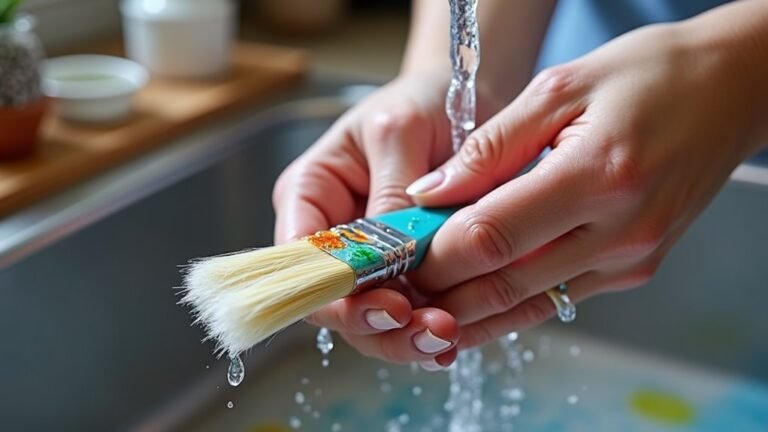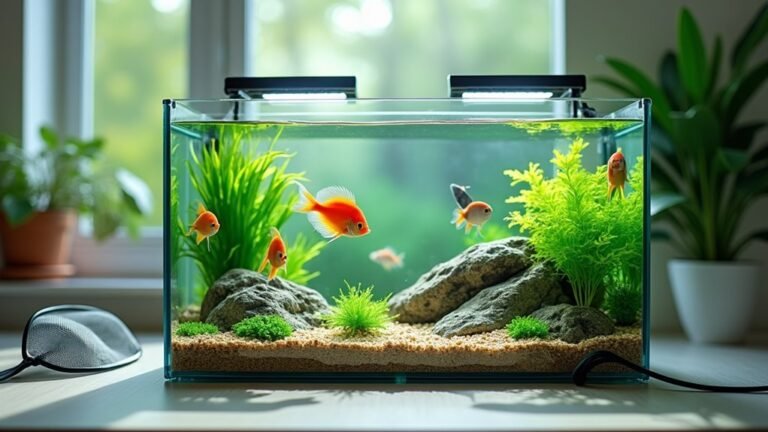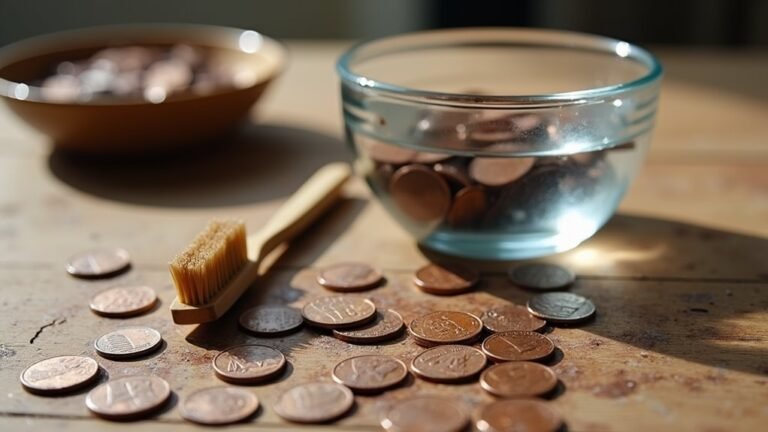We’ve all walked through a cemetery and seen those dirty, worn-out tombstones that don’t look as good as they used to. It’s upsetting to see, right? When we lose someone we care about, we want their headstone to stay clean and readable over time. Cleaning a tombstone isn’t just about making it look nice—it’s about protecting it and showing respect for the person it remembers. According to the Association for Gravestone Studies, “Improper cleaning can be far more damaging to a gravestone than not cleaning it at all.” With the right methods, we can help keep these stone markers looking good without hurting them. But how do we get started?
Preserving Stone Memories
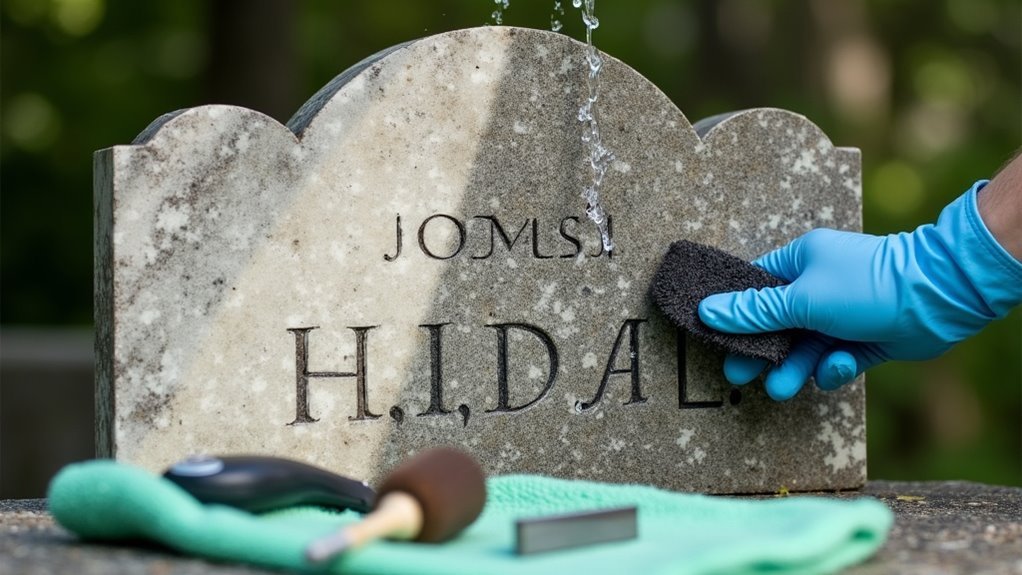
Why do we clean tombstones?
It’s about more than just appearances.
We’re preserving memories etched in stone, protecting them from weathering and environmental damage that could erase someone’s legacy.
I think regular cleaning prevents permanent stains and biological growth, which, if left untreated, can actually deteriorate the granite.
When we maintain these memorials, we’re showing respect and ensuring that future generations can still connect with their past. Proper care of headstones is essential for preserving memories and history.
##
Let’s talk about how we can properly care for these important memorials while avoiding common mistakes that might damage them.
We’ll cover the essential steps to follow when cleaning a headstone, including which products work best and how to use them correctly. It’s important to use gentle cleaning methods to preserve the stone’s natural beauty, as harsh chemicals can cause irreversible damage.
I think it’s equally important to understand what practices to avoid, as using the wrong cleaning method can permanently harm these irreplaceable stone memorials.
Things to Do When Cleaning a tombstone
Properly cleaning a tombstone requires careful technique and appropriate materials to preserve the memorial while effectively removing dirt, biological growth, and environmental stains.
The process demands respect for both the historical significance and structural integrity of the monument, as improper cleaning methods can cause irreversible damage to the stone and inscriptions that honor the deceased.
- Conduct a preliminary inspection – Carefully examine the tombstone for cracks, loose pieces, or signs of instability before beginning any cleaning process to avoid causing further damage.
- Pre-wet the entire surface – Thoroughly saturate the stone with distilled water to loosen dirt and create a protective barrier that prevents deep absorption of cleaning solutions.
- Prepare gentle cleaning solution – Mix distilled water with a small amount of pH-neutral, non-ionic soap that won’t react with the stone’s mineral composition.
- Apply cleaner in circular motions – Use soft cloths or natural sponges to gently work the cleaning solution across the surface without creating abrasive friction.
- Allow appropriate dwell time – Let the cleaning solution sit for 4-5 minutes on areas with biological growth like moss or lichen to effectively loosen these materials.
- Gentle scrubbing technique – Use only soft-bristled brushes (never wire or stiff plastic) to carefully remove loosened dirt and growth with light pressure.
- Complete thorough rinsing – Flush the entire tombstone with clean water, ensuring all soap residue is removed to prevent future discoloration or deterioration.
Things to Avoid When Cleaning a tombstone
When caring for tombstones, it’s essential to approach cleaning with caution and respect for these historical artifacts.
Improper cleaning methods can cause irreparable damage to these memorials, potentially destroying inscriptions, accelerating deterioration, and compromising structural integrity.
Protecting these monuments means understanding not just what to do, but what practices to avoid entirely.
- Wire brushes or abrasive pads – These tools scratch the surface of tombstones, causing erosion and permanent loss of original material.
- Power washers – The high pressure strips away the stone’s surface layers and can force water deep into cracks, causing further damage.
- Bleach or strong acids – These harsh chemicals etch porous materials like marble, altering texture and accelerating deterioration of the stone.
- Cleaning damaged stones – Tombstones showing signs of cracking, flaking, or instability shouldn’t be cleaned as the process may worsen existing damage.
- Removing patina – The original polished surface provides natural weathering resistance; removing it reduces inscription readability and the stone’s longevity.
- Cleaning during freezing conditions – Water trapped in the stone can freeze and expand, causing new cracks and structural damage if cleaned during cold weather or 48 hours before a freeze.
Steps
Properly cleaning a tombstone requires careful attention to prevent damage while effectively removing dirt and debris.
Headstones are often made of porous materials that can deteriorate if harsh chemicals or improper techniques are used, making it essential to approach the cleaning process with respect and the right methods.
Step 1: Examine the headstone carefully for any signs of damage including cracks, chips, or flaking surfaces, and consult with a professional conservator if you notice significant deterioration.
Step 2: Gather all necessary supplies including a soft-bristle brush (never use wire brushes), distilled water, pH-neutral soap, soft cloths, and a spray bottle.
Step 3: Thoroughly wet the entire headstone with distilled water, creating a protective barrier that prevents cleaning agents from being absorbed too deeply into the stone.
Step 4: Mix a small amount of pH-neutral soap with distilled water and apply it to the brush, not directly to the stone.
Step 5: Clean the headstone using gentle circular motions, applying minimal pressure and focusing on particularly dirty areas.
Step 6: Rinse the headstone completely with distilled water, ensuring all soap residue is removed to prevent potential damage.
Step 7: Allow the headstone to air dry naturally rather than wiping it dry, which could cause streaking or additional wear.
Final Thoughts
Cleaning a tombstone might seem like a straightforward task,
but we’ve found that approaching it with both care and knowledge makes all the difference in preserving these important markers of history.
##
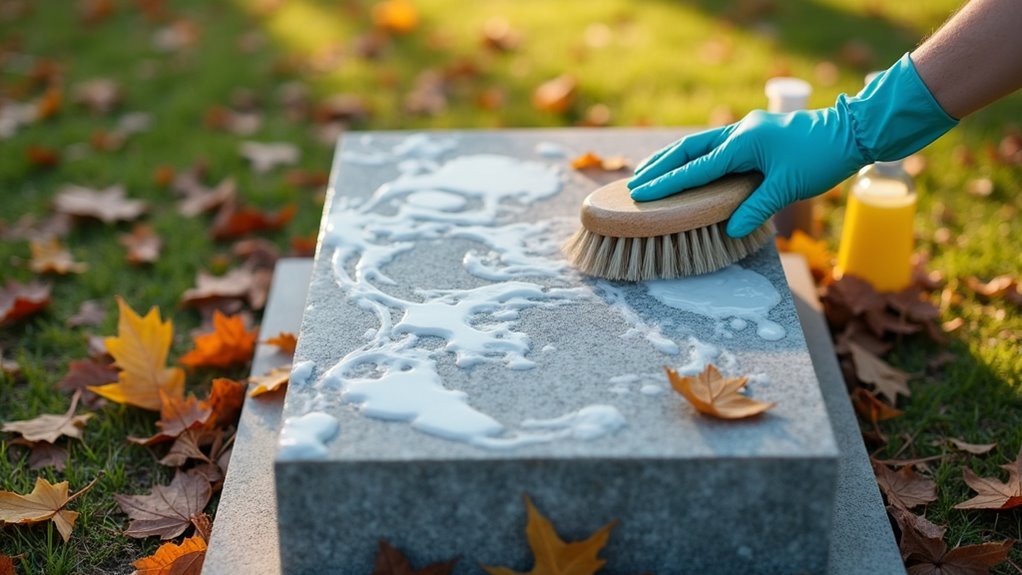
Cleaning a loved one’s headstone is both a practical maintenance task and a meaningful act of remembrance.
When we clean a headstone, we both preserve history and engage in an intimate act of remembrance.
By following proper techniques—using gentle cleaners like D/2 Biological Solution for tough stains, always thoroughly rinsing twice after cleaning, and applying ammonia-free glass cleaner for shine on appropriate materials—you can preserve these important memorials for generations to come.
Regular maintenance, such as daily dust removal, is essential to keep the stone looking its best.
Remember that patience is key in this process.
Some biological growth may require repeated treatments, and products like D/2 might temporarily change the stone’s appearance before revealing its restored beauty.
Taking the time to clean properly shows respect not only for your loved one but for the craftsmanship of their memorial.
We encourage you to make headstone cleaning a regular part of your cemetery visits.
Whether you’re preserving family history or honoring someone special, this simple act of care helps guarantee that memories remain visible and legible for years to come.
With the right tools and techniques, you can transform a weathered monument back to a dignified tribute that truly honors those who’ve passed.

